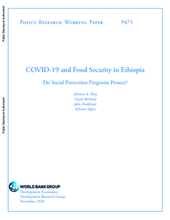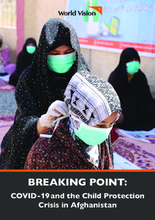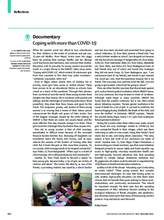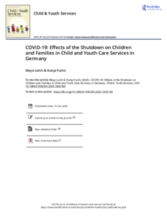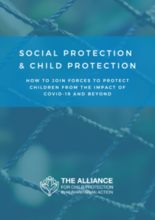This section includes resources on the response to the COVID-19 pandemic as it relates to child protection and children's care.
News on COVID-19 and Children's Care
Webinars and Events on COVID-19 Response
Displaying 211 - 220 of 756
This paper assesses the impact of Ethiopia's flagship social protection program, the Productive Safety Net Program on the adverse impacts of the COVID-19 pandemic on the food and nutrition security of households, mothers, and children.
Key findings from this report demonstrate that due to the negative impact of the outbreak, the vulnerability of the households further increased and already existing dangerous coping strategies such as child labor, child marriage and decrease of food consumption have been worsened by financial insecurity for families and losses of household income.
In this piece for the Lancet, Kelley Swain reflects on the UNICEF video essay series, “Coping with COVID-19”, which invited 16 adolescent girls from nine countries to film their lives under lockdown—“unfiltered, unscripted, 100% real”.
This podcast episode discusses the question: do child protection professionals have what they need to support and protect children as the coronavirus makes a comeback?
The purpose of this study is to examine parents’ reports on the response their children received to their needs during the COVID-19 crisis.
The purpose of this study is to examine parents’ reports on the response their children received to their needs during the COVID-19 crisis.
In this article, the authors describe the short and long term ramifications of the pandemic for children and youth living in their residential programs in Germany under the auspices of municipal child and youth services.
In this podcast episode, Pramila Manandhar, media officer for CWIN in Nepal, shares her experiences in supporting children living and working on the street during lockdown.
This Child Protection learning brief, the second in a series, has been prepared for UNICEF country offices and practitioners as they respond to mental health and psychosocial impact during the pandemic.
The objective of this guidance is to lay out key arguments for close collaboration across Social Protection and Child Protection to address the socio-economic impact of COVID-19 on children and families towards reduction of adverse Child Protection outcomes.

